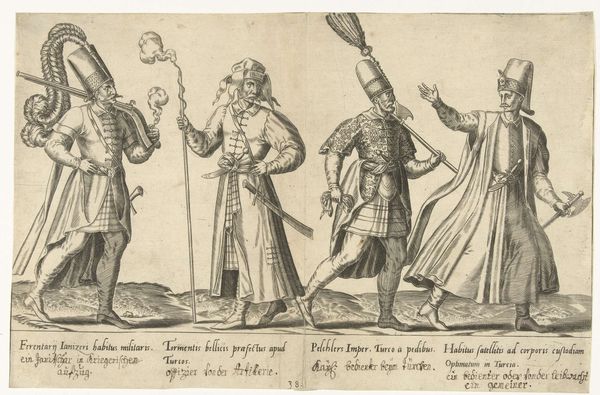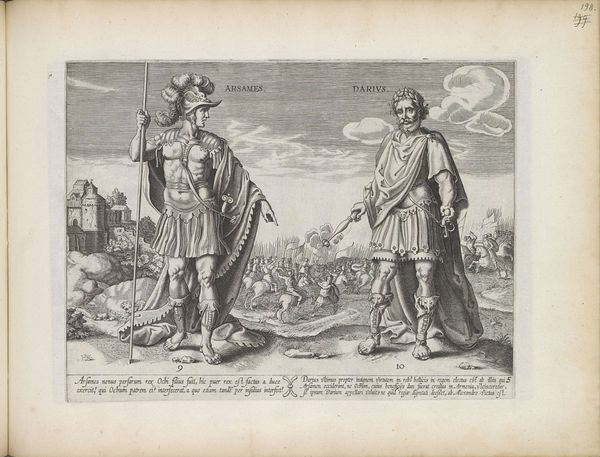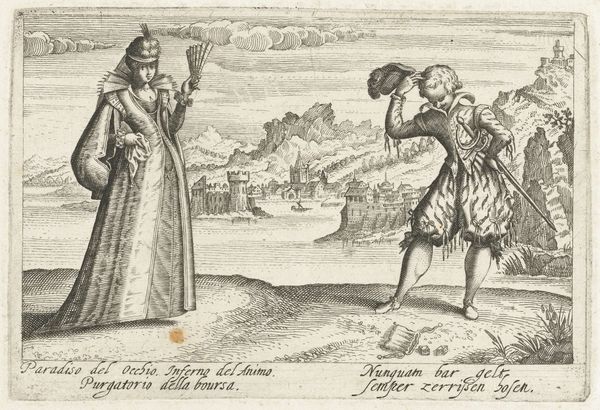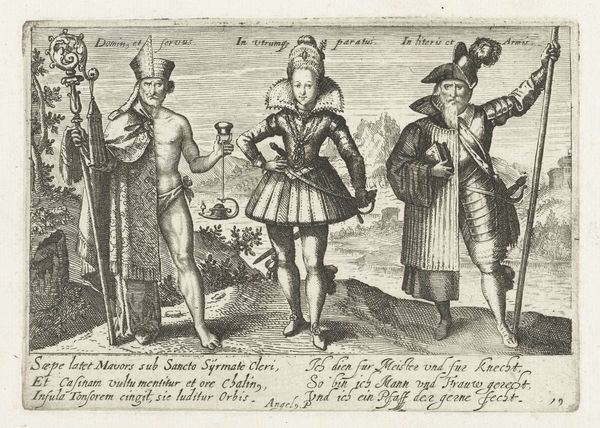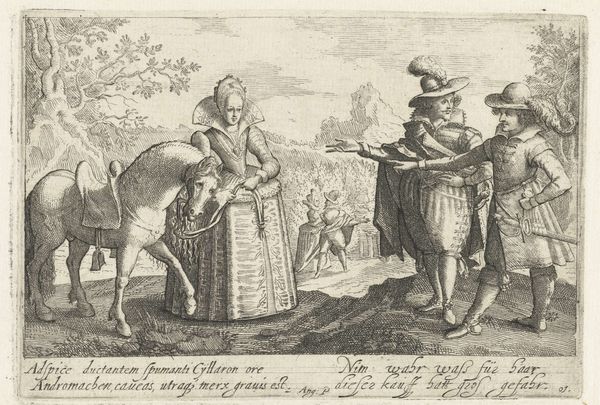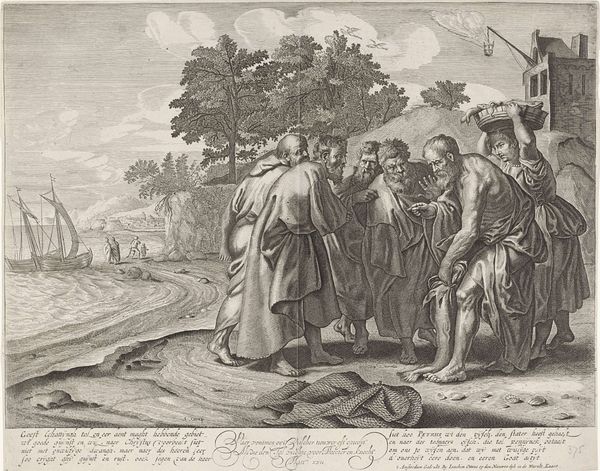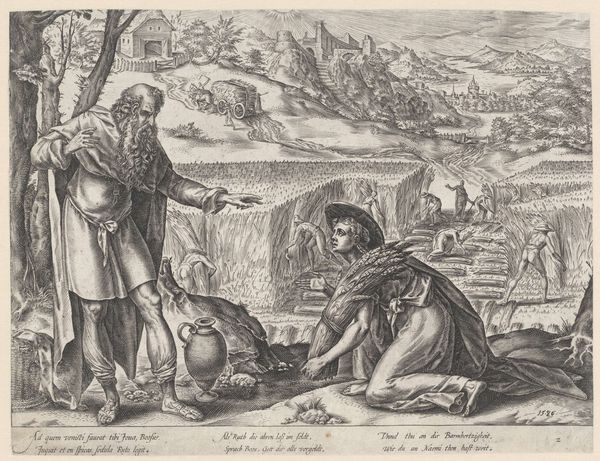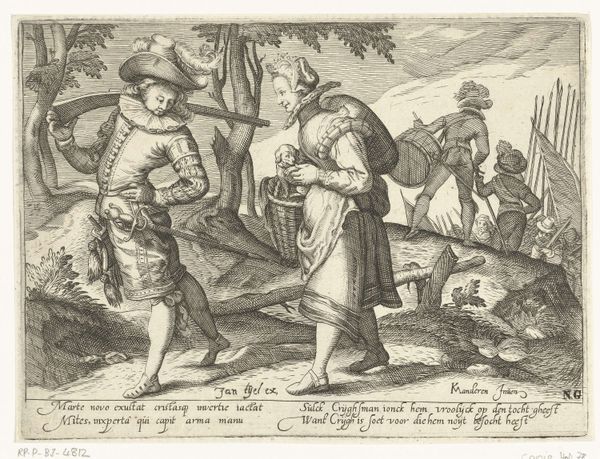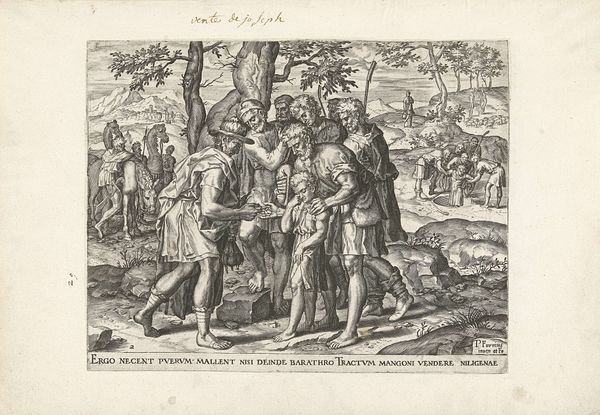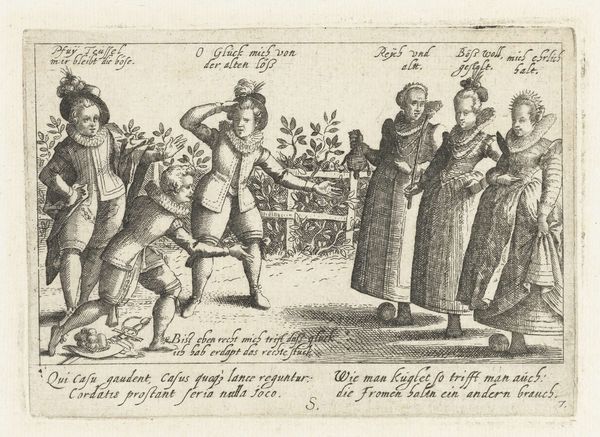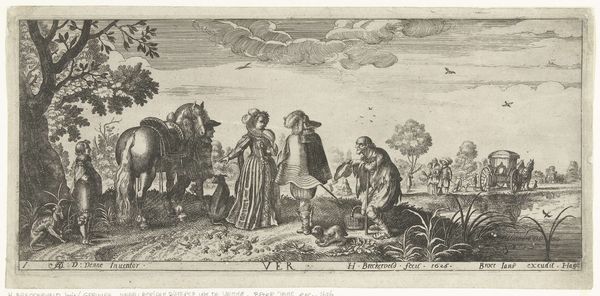
drawing, print, engraving
#
drawing
#
allegory
# print
#
figuration
#
11_renaissance
#
engraving
Dimensions: height 99 mm, width 132 mm
Copyright: Rijks Museum: Open Domain
Curator: Look at this engraving, "Allegory on the Balance Between Work and Leisure" from 1608, crafted by Jacob van der Heyden. The composition and subject speak volumes. Editor: Immediately, I see a struggle being portrayed, a real tension between responsibility and pleasure—that somber, robed figure juxtaposed against the two lightly dressed characters flanking him. The darkness in the print evokes an unsettling tone for such an aspirational message. Curator: Yes, in a historical context, the image reflects the rising merchant class, their ethics of diligent work being questioned by a culture where leisure was traditionally an aristocratic privilege. Van der Heyden, with his background in emblem books, seeks to make an assertion about values. Editor: Precisely. We’re seeing a very gendered dynamic too, the figure on the left looks active and studious, almost as if he embodies the "labor" referred to in the title. It speaks to a Protestant work ethic, tying industry to piety. Curator: See the open book and the instruments? These are objects referencing work and skill. On the other side, the scantily-clad figure represents, arguably, frivolity and is linked to the violin and scattered playing cards on the lower part of the picture, signifiers of pleasure. Editor: Although, I wonder, how straightforward the contrast is really meant to be. Aren’t we always negotiating between these poles? That central figure, ostensibly the arbiter, feels burdened; perhaps van der Heyden isn't so much celebrating work as urging temperance. Curator: Well, artists of this period were steeped in a tradition of didactic prints, weren't they? We tend to approach them with 21st-century lenses. I still maintain that a contemporary audience was well attuned to recognizing the promotion of virtuous toil over sloth. Editor: Maybe, but look how vulnerable "pleasure" is made to seem here. The artist creates this sort of vulnerable, wistful figure, and places instruments related to labor around this figure. This approach suggests something complicated, maybe a subversive current critiquing pure, capitalist endeavor? Curator: It’s fascinating how prints like this acted as a moral compass for their time, yet open to continuous re-evaluation today. Editor: Absolutely! Deconstructing historical works gives insight into our present and gives power for those seeking an equilibrium.
Comments
No comments
Be the first to comment and join the conversation on the ultimate creative platform.
